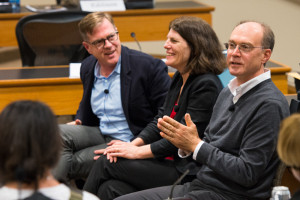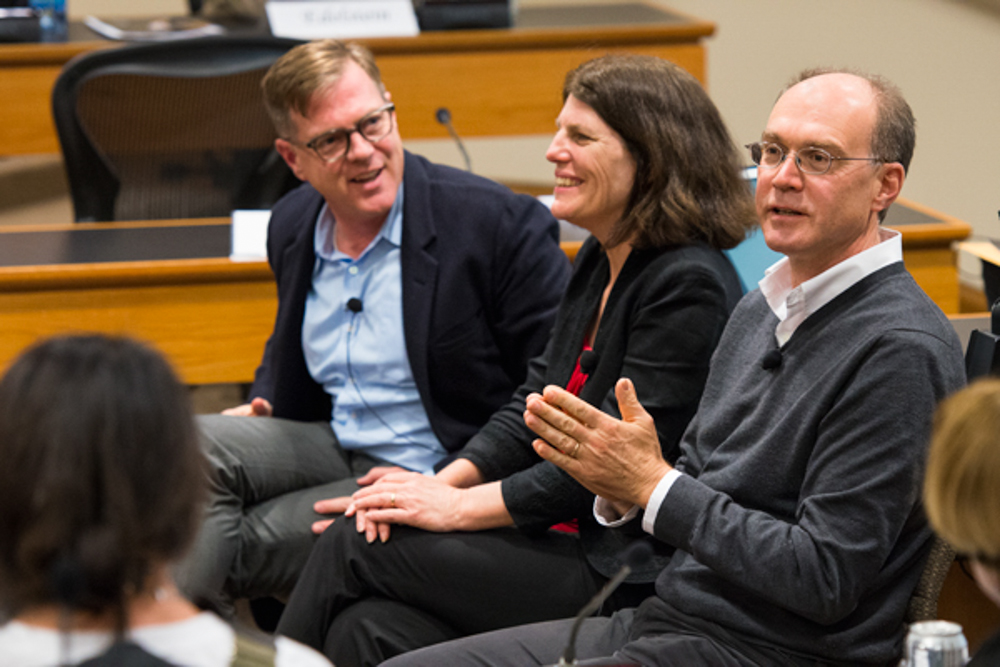
The first winter quarter meeting of the 46th Faculty Senate took place last Thursday, focusing both on future plans for the Bing Overseas Studies Program (BOSP) and on Stanford’s role in online learning.
Bing Overseas Studies Program offerings
Ramon Saldivar, professor of English and comparative literature and director of BOSP, presented a report on the state of the program. In his report, Saldivar emphasized the importance of attracting more students to study abroad programs and discussed a focus on expanding BOSP’s offerings.
One new opportunity will be a BOSP program in Istanbul, Turkey, during winter quarter 2014-15. Unlike other quarter-length programs, Salvidar explained, the Istanbul program will not involve Stanford building its own site. Instead, Stanford will partner with the local Koç University to create a more flexible program in the Middle East.
Citing an example of BOSP’s attempts to create programs appealing to different kinds of students, Saldivar described BOSP’s four-week program on community health in Oaxaca, Mexico, which goes beyond the scope of medicine.
“The focus of this program is community health,” Salvidar said. “But really the question the seminar asks is this: What does it take to create a community that can be called healthy?”
Seventy students applied for the 15-slot Oaxaca program, and BOSP responded to the high demand by adding a preparatory course in spring quarter in order to enrich the seminar experience. Saldivar described plans to experiment with running two parallel Oaxaca courses in the future.
Saldivar also discussed the value of internships, which offer additional opportunities to students studying abroad.
“Internship programs also represent for us a pathway to the future,” Saldivar said. “This is something that I think we can develop further.”
Other future plans for BOSP that Saldivar discussed included expansion of the Cape Town program to three quarters and collaborative efforts with the School of Engineering for programs in China and India.
In answer to a question from Debra Satz, senior associate dean for the Humanities and Arts, Salvidar stated that BOSP has been working with faculty to blend the curricular experience on campus with overseas experiences as seamlessly as possible. However, the connection between curriculum and experience would benefit from continued improvement and a formal structure.
“[We want] a sequence there, rather than just a randomness,” Salvidar said. “It’s tricky, it’s hard to do, and it doesn’t always work.”
Stanford’s role in online learning
After the discussion on BOSP, President John Hennessy introduced an online learning panel held by Associate Professor of Education Mitchell Stevens, Director of the Open Learning Initiative Candace Thille and Vice Provost for Online Learning John Mitchell. This panel focused on massive open online courses (MOOCs), which could potentially offer higher education to anyone with Internet access.
In introducing the panel, Hennessy discussed the role of MOOC development at Stanford, prioritizing the importance of using online learning technologies to improve the experiences of Stanford students on campus.
“One area I’m particularly excited about is…using technology to study the effects of our pedagogy,” Hennessy said. “Online technology could be a significant enhancement in terms of figuring out how our students are mastering courses, and improving our pedagogy at a much more rapid rate.”
He added that MOOCs could extend Stanford’s reach to students overseas and facilitate access to high education for a wider range of people in terms of affordability and accessibility.
Stevens discussed the rising cost of higher education and its increasing burden on students and their families.
“There’s a reason people are thinking about college educations as consumer products,” Stevens said. “They’re literally mortgaging their own futures to pay for college.”
Stevens described continuing advances in digital media as allowing MOOCs to dramatically increase access to higher education.
“I am convinced we are at an epochal, pivotal moment in the history of higher education,” Stevens said. “This is a different kind of change.”
Mitchell discussed implications of MOOCs for teachers spreading their knowledge.
“We’ve all taught to classrooms full of students and enjoyed the rock star feeling of being in front of a crowd,” Mitchell said. “But that’s nothing compared to reaching tens of thousands of people with your vision of the field.”
Mitchell discussed Stanford’s MOOC program as a method of creating more courses in electrical engineering, English and core biology subjects. Future strategic directions for the MOOC program include partnering with other institutions and becoming a hub of experimentation in the field.
However, Raymond Levitt M.S. ‘73 Ph.D. ‘75, professor of civil and environmental engineering, pointed out that some institutions of higher learning could be threatened or even eliminated if materials made by top-tier universities dominated the market.
“Our hope is that…we’re humble and recognize the organizational diversity of American education in and of itself,” Stevens said in response. “[Our] goal isn’t to close other universities, but to add value to that ecosystem.”
Andrea Goldsmith, professor in the School of Engineering, asked the panel to predict what the greatest successes and failures of the MOOC experiment would be 10 years in the future.
Stevens responded that there is no future alternative to MOOCs.
“It’s not an experiment,” Stevens said. “It’s a new reality…there’s no turning back.”
Contact Minkee Sohn at minkees ‘at’ stanford ‘dot’ edu.
